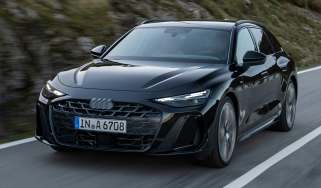Mercedes E-Class estate (2009-2016) - Reliability & safety
Mercedes E-Class estate owners are a generally satisfied bunch
The current Mercedes E-Class estate hasn’t been crash-tested by Euro NCAP, but its predecessor has (in saloon form), scoring the full five stars. Since the current model shares much of its body structure with that car, while boasting better passive and dynamic safety systems, we believe it’s just as safe. Its reliability record and typical ownership experience are a little less impressive, though. If you intend to keep your E-Class after its three-year warranty has expired, we’d advise you to purchase an extended warranty.
Mercedes E-Class estate reliability
The previous generation E-class saloon and estate, on which the current E-Class is based, finished 27th in our Driver Power 2014 owner satisfaction survey. It’s a respectable result, but hardly what you’d expect of a premium car like this – particularly one with a reputation built on its solid construction.
The previous E-Class didn’t have a perfect reliability record, but changes under the skin applied to this model should go some way to address this. Inside it feels like it’s been solidly built from high-quality materials, so we’d expect a better showing in the build quality part of the survey than before too.
Despite this, the E-Class estate has won praise from Carbuyer readers. Three quarters of owners would recommend one to a friend, and the overwhelming majority gave their car four our five stars.
Mercedes E-Class estate safety
The previous E-Class, on which the current model is based, scored the full five stars in its Euro NCAP crash test. We’d expect this latest version to perform just as well, especially since it has an array of additional safety systems, including at least seven airbags, electronic stability control and a driver drowsiness detection system.
In addition, all E-Class models have Mercedes’ Collision Prevention Assist Plus, which warns you if you’re driving too close to the vehicle in front. If it detects an imminent collision, it applies partial braking, and in an emergency situation, applies maximum braking effort to help avoid a crash.
Which Is Best?
Cheapest
- NameE200 AMG Line 5dr 9G-Tronic
- Gearbox typeSemi-auto
- RRP£58,370
Most Economical
- NameE300e Urban Edition 5dr 9G-Tronic
- Gearbox typeSemi-auto
- RRP£67,450
Fastest
- NameE450d 4M AMG Line Premium 5dr 9G-Tronic [Pan Roof]
- Gearbox typeSemi-auto
- RRP£82,120















